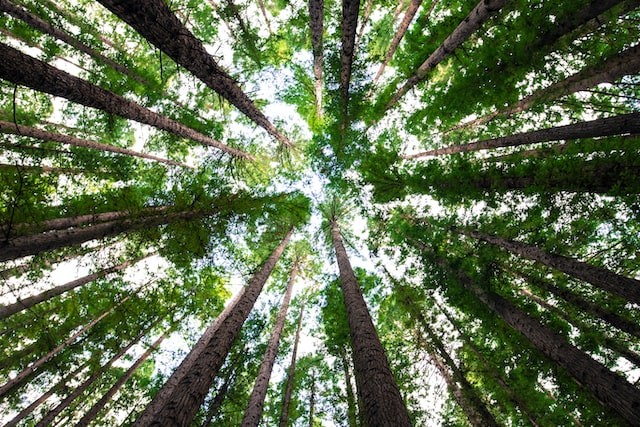The potential of rainforests to store carbon may diminish as a result of climate change.
This is because photosynthesis rates in rainforest species' leaves decrease at higher temperatures, and the plants' natural cooling mechanisms fail during droughts.
Increased heat endangers animals that store the most carbon. A recent thesis from the University of Gothenburg demonstrates this.
Trees get overheated in a warmer rainforest
 (Photo : Arnaud Mesureur/Unsplash)
(Photo : Arnaud Mesureur/Unsplash)

Some tree species may withstand increasing temperatures in the tropics by sucking up enormous amounts of water to their leaves and transpiring via wide-open pores in their leaves, as per ScienceDaily.
These are mostly fast-growing trees that establish themselves early in the development of a rainforest.
The same cannot be true for the trees that form the canopy of old-growth rainforests.
They grow more slowly but get larger and taller, and their leaves do not have the same ability to cool themselves through transpiration.
The 'air cooling' of the leaves is powered by water.
Because the tropics have not suffered Ice Ages, they have had a relatively constant climate both historically and seasonally.
Climate change has caused temperatures to rise, and we've found that some tree species have higher mortality rates, but we didn't know why until now, according to thesis author Maria Wittemann.
She has investigated various tree species that may be loosely split between early successional species, which establish themselves early in a new rainforest, and late successional species, which grow slowly but significantly larger, and hence provide a greater carbon sink over time.
The way the trees in the two groups tolerate heat is noticeably different.
Early successional species expand the pores in their leaves larger, allowing huge volumes of water to evaporate, lowering the temperature in their leaves, much like an air conditioning system.
Late successional species' pores do not expand as much, making it more difficult for them to keep cold.
In our measurements, we discovered significant temperature fluctuations in the leaves.
The temperature difference between late-successional and early-successional species growing in the same place might reach 10 degrees Celsius.
Late successional species struggled more with excessively high temperatures. According to Maria Wittemann, these trees had a greater death rate.
However, the early successional species' copious transpiration via their leaves necessitates a significant amount of water.
During a drought, the researchers saw that early successional species became more susceptible to heat and shed their leaves.
Late successional species were more drought tolerant due to their lower water use.
Read more: Plants Go into Photosynthesis 'Beast Mode' After Gene Mutation: New Study
Collaboration with a nearby university
According to a previous study, the situation is the worst in the Amazon. This carbon sink is expected to be converted into a carbon source as early as 2035.
Climate change has not been as severe in African rainforests.
In conjunction with the University of Rwanda, researchers at the University of Gothenburg are doing research in high-elevation forests in Rwanda.
The trees were researched in situ, but seedlings were also planted in Gothenburg climate chambers to observe their growth at different temperatures.
What is the process of photosynthesis?
The majority of the oxygen that people and animals breathe is produced through photosynthesis. The following is how it works: Tree and plant roots receive water, minerals, and nutrients from the soil, as per Oregon Forests.
The leaves or needles collect carbon dioxide from the air at the same time. These basic ingredients are transported to chlorophyll-containing plant cells.
Chlorophyll converts carbon dioxide and water into oxygen and carbon-based molecules such as glucose, a sugar that aids plant growth, using solar energy.
The plant or tree creates surplus oxygen throughout the process, which it releases into the atmosphere.
Forests and photosynthesis play an important role in extracting carbon dioxide from the atmosphere, helping to offset the detrimental effects that excess carbon dioxide emissions may have on the ecosystem.
Related article: Tree Growth is Not Entirely Dependent on Photosynthesis: New Study
© 2024 NatureWorldNews.com All rights reserved. Do not reproduce without permission.

![Tsunami Hazard Zones: New US Map Shows Places at Risk of Flooding and Tsunamis Amid Rising Sea Levels [NOAA]](https://1471793142.rsc.cdn77.org/data/thumbs/full/70325/280/157/50/40/tsunami-hazard-zones-new-us-map-shows-places-at-risk-of-flooding-and-tsunamis-amid-rising-sea-levels-noaa.jpg)



